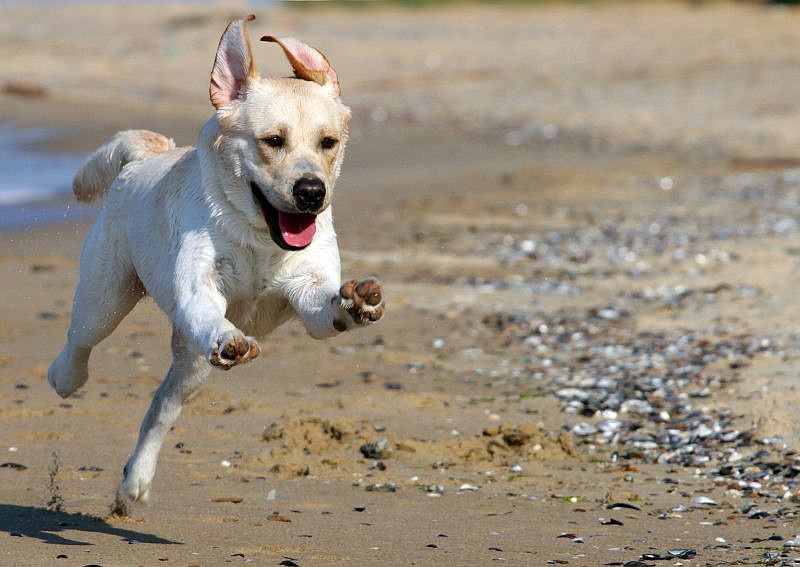- July 26, 2024
-
-
Loading

Loading

by: Amy Wade-Carotenuto
Executive Director, Flagler Humane Society
If you’ve been involved with Flagler Humane Society much over the last couple of years, you may have met “Sperry,” a block headed pit/sharpei mix who “works” at the shelter. She helps teach people that big headed dogs like her can be unbelievably sweet and gentle. Last week a volunteer and I were talking about Sperry being super happy and doing “zoomies.” “What is a zoomie?” asked someone who overheard us. You mean not everyone knows what a dog zoomie is?
Your dog runs into the room with his back rounded and his rump tucked and low to the ground. His mouth is open and he almost appears to have a smile. His facial expression is downright goofy. He circles around the dining room table full blast, jumps on the couch and then off again, spins around and then speeds down the hall. Then back again for a repeat, maybe a couple of repeats.
Zoomies are infectious fun, and if you have two or more dogs, one dog’s sudden burst into a zoomie can cause the other dog(s) to join in until you have an entertaining show sure to leave you giggling.
There’s a technical term for the zoomies. Officially speaking, zoomies are Frenetic Random Activity Periods. FRAPs are unmistakable explosions of happy energy your dog just cannot contain. The spectacle allows animals to relieve stress, let out excess energy and deal with exhilaration and excitement.
In what seems to be equal parts joy and pent-up energy, zoomies are known to affect just about every dog breed.
They don’t last long, usually just a very few minutes and they are completely normal. There is nothing wrong with this behavior as long as they don’t run in a place that is unsafe such as a spot with dangerous objects or near a road. Sometimes dogs who chase their tails are mistakenly identified as having the zoomies. Tail chasing is more a symptom of obsessive-compulsiveness.
There are often precursors to the zoomies. There’s the after bath zoomies. Those can be hilarious, although a bit chaotic, as owners attempt to keep a 90 mile an hour wet dog from bouncing from one piece of furniture to another.
Zoomies often occur when a dog’s favorite person comes home. They also can happen when a dog first goes outside after being inside or released from a crate, when they see another dog or after defecating,
Zoomies most often occur in puppies and younger dogs, but older dogs get zoomies too, just not quite as often.
Other species get the zoomies, too. They are best known in dogs, but similar behavior has also been described in ferrets, cats, goats, horses, bears and even elephants. Wow, that would be some major zoomies!
Zoomies are some of the most fun to watch canine behaviors. It’s impossible not to laugh when your dog is tearing around the yard like a maniac—the energy is infectious. It’s pure, unadulterated canine fun and one of the many reasons dogs are so good for the soul.
In this day and age of “zoom” meetings, I can honestly say that watching my dogs racing around the house, spinning, play bowing and rocketing up the stairs is my favorite kind of “Zoom” meeting.